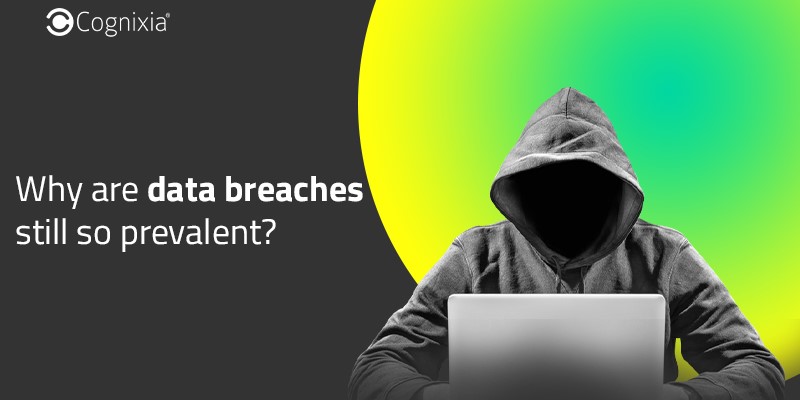In today’s hyperconnected digital landscape, where cybersecurity, data protection, and privacy regulations are more stringent than ever, one might expect data breaches to be a diminishing concern. Yet, the reality presents a starkly different picture. Despite unprecedented investments in cybersecurity infrastructure, data breaches remain alarmingly prevalent, causing significant financial and reputational damage to organizations worldwide. This article explores the reasons behind this persistent threat and examines how the cybersecurity landscape continues to evolve in an endless cycle of measures and countermeasures.
The Growing Scale and Sophistication of Modern Data Breaches
The digital transformation journey that most organizations have embarked upon has created an expanded attack surface that cybercriminals are eager to exploit. According to Verizon’s 2024 Data Breach Investigations Report, 74% of breaches now involve a human element, including social engineering attacks, errors, and misuse. This represents a significant increase from previous years and highlights how threat actors have adapted their tactics to target the most vulnerable link in any security chain: people.
When examining these breaches’ financial impact, the numbers are equally concerning. IBM’s Cost of a Data Breach Report 2024 revealed that the global average data breach cost has reached $4.88 million, representing a 15% increase since 2020. For organizations in regulated industries such as healthcare and financial services, these costs can be substantially higher, often exceeding $10 million per incident.
The sophistication of modern attacks has evolved alongside defensive capabilities. Threat actors now employ advanced persistent threats (APTs), zero-day exploits, and AI-powered attack mechanisms that can adapt to and evade traditional security measures. These tools allow malicious actors to remain undetected within networks for extended periods, often an average of 287 days before discovery, according to CrowdStrike’s 2024 Global Threat Report.
The Technological Paradox: Innovations Creating New Vulnerabilities
As you implement innovative technologies to drive business growth and efficiency, you may inadvertently introduce new vulnerabilities into your ecosystem. The rapid adoption of cloud services, IoT devices, and 5G connectivity has created a complex network architecture that is challenging to secure comprehensively.
Cloud adoption continues to accelerate, with Gartner reporting that global cloud spending reached $679 billion in 2024, yet cloud security practices often lag behind deployment. Multi-cloud environments, which are increasingly common, introduce additional complexity and potential security gaps. According to the Cloud Security Alliance’s 2024 State of Cloud Security Report, 82% of organizations experienced at least one cloud security incident in the past year, with misconfiguration being the primary cause in 63% of cases.
The Internet of Things (IoT) presents an even more concerning scenario. With an estimated 41.6 billion connected devices expected to be in use by 2025, according to IDC research, the potential entry points for attackers have multiplied exponentially. Many of these devices are manufactured with minimal security considerations, creating an extensive network of vulnerable endpoints. When you connect these devices to your corporate network, you effectively extend your attack surface beyond traditional boundaries.
The rollout of 5G networks further complicates this picture by enabling faster data transmission and lower latency, which, while beneficial for business operations, also accelerates the potential speed and scale of attacks. Cybersecurity firm BlackBerry’s 2024 Threat Intelligence Report indicates that 5G-enabled attacks can propagate 200 times faster than those on previous network generations, giving security teams even less time to respond.
The Organizational Challenge: Security Culture and Resource Constraints
When you examine organizational factors contributing to data breaches, several patterns emerge. Many organizations still approach cybersecurity as a primarily technical challenge rather than a comprehensive business risk requiring holistic management. This narrow perspective often leads to fragmented security approaches that fail to address the full spectrum of potential vulnerabilities.
Resource constraints remain a significant issue. The cybersecurity skills gap continues to widen, with CyberSeek reporting approximately 700,000 unfilled cybersecurity positions in the United States alone as of October 2024. This shortage of qualified professionals leaves many organizations unable to implement and maintain robust security measures effectively.
Another critical factor is the persistent gap in security awareness among senior leadership. A Harvard Business Review survey published in early 2024 found that only 31% of board members felt they had sufficient knowledge to provide effective oversight of cyber risks. When your organization’s leaders lack the necessary understanding of cybersecurity challenges, this often translates into inadequate resource allocation and strategic prioritization.
Employee awareness also remains problematic. Despite increased investment in security training, Proofpoint’s 2024 State of the Phish Report revealed that 82% of organizations experienced successful phishing attacks in the past year. When your employees are not adequately trained to recognize and respond to security threats, they become unwitting accomplices to potential breaches.
The Regulatory Landscape: Compliance vs. Security
As you navigate the increasingly complex regulatory environment surrounding data protection, you may find yourself caught between compliance requirements and effective security practices. While regulations like GDPR, CCPA, and their global counterparts have raised the bar for data protection standards, compliance-focused approaches often fail to address the dynamic nature of cybersecurity threats.
The Ponemon Institute’s 2024 True Cost of Compliance Study found that organizations spend an average of $5.6 million annually on compliance activities, yet 64% of surveyed companies experienced security incidents despite being compliant with relevant regulations. This disconnect highlights the fundamental difference between achieving regulatory compliance and implementing truly effective security measures.
Reporting requirements have become more stringent, with many jurisdictions now mandating disclosure of breaches within 72 hours or less. While these requirements have improved transparency, they have also created additional pressure on security teams to assess and respond to potential incidents rapidly, sometimes at the expense of thorough investigation and remediation.
The Evolving Threat Landscape: The Endless Cat-and-Mouse Game
Perhaps the most fundamental reason data breaches persist is the continuous evolution of attack methodologies. As you enhance your security measures, threat actors adapt and develop new techniques to circumvent them, creating an endless cycle of measure and countermeasure.
Ransomware attacks have evolved from relatively simple encryption schemes to sophisticated double and triple-extortion tactics. According to SonicWall’s 2024 Cyber Threat Report, ransomware variants increased by 36% year-over-year, with attackers now commonly exfiltrating sensitive data before encryption and threatening to publish it if ransom demands are not met. Some groups have added distributed denial-of-service (DDoS) attacks as a third layer of extortion.
Supply chain attacks represent another area of significant evolution. Following high-profile incidents like the SolarWinds breach, attackers have increasingly targeted trusted software providers and development pipelines. A 2024 study by Aqua Security found a 430% increase in supply chain attacks compared to 2020, with threat actors recognizing the force-multiplier effect of compromising a single vendor to gain access to numerous downstream customers.
The weaponization of artificial intelligence and machine learning has further shifted the balance in this ongoing contest. Threat actors now use AI to generate more convincing phishing emails, identify vulnerabilities faster than human analysts, and develop malware that can adapt to evade detection systems. When you implement AI-based security solutions, you may temporarily gain an advantage, but this advantage is quickly neutralized as adversaries adopt similar technologies for offensive purposes.
Building Resilience: Moving Beyond Prevention to Detection and Response
As the breach landscape continues to evolve, your organization must shift from a purely preventative security posture to one that emphasizes detection, response, and resilience. According to Gartner, by 2025, 60% of organizations will use cybersecurity risk as a primary determinant in conducting third-party transactions and business engagements, up from less than 5% in 2021.
Zero Trust architecture has emerged as a crucial framework for addressing modern security challenges. By eliminating implicit trust and requiring continuous verification of every user and device, Zero Trust models can significantly reduce the impact of breaches when they occur. Forrester Research indicates that organizations implementing Zero Trust principles experienced 66% fewer breach incidents and 50% lower costs when breaches did occur.
Threat intelligence sharing has also become increasingly important. The World Economic Forum’s 2024 Global Cybersecurity Outlook found that organizations participating in formal threat intelligence sharing programs detected breaches 59% faster than those operating in isolation. When you collaborate with industry peers and government agencies to share information about emerging threats, you significantly enhance your ability to anticipate and counter attacks.
Automated security orchestration, response, and remediation (SOAR) platforms represent another critical advancement. By automating routine security tasks and response procedures, these systems can dramatically reduce the time between detection and containment. Research from Palo Alto Networks indicates that organizations using SOAR technologies reduced their mean time to respond to incidents by 84% compared to those relying on manual processes.
The Path Forward in an Era of Persistent Threats
Data breaches remain prevalent not because organizations are unaware of the risks or unwilling to address them but because the underlying challenges are constantly evolving and fundamentally complex. As you work to protect your organization’s sensitive information, you must recognize that cybersecurity is not a problem to be solved but a risk to be managed through continuous adaptation and improvement.
The most effective approach combines technological solutions with organizational awareness, proactive risk management, and resilient response capabilities. By fostering a security-conscious culture throughout your organization, implementing a defense-in-depth strategy that assumes breaches will occur, and developing the ability to detect and respond to incidents quickly, you can significantly reduce both the likelihood and impact of data breaches.
As technologies continue to advance and threat actors become increasingly sophisticated, the cat-and-mouse game will undoubtedly persist. However, by remaining vigilant, adaptive, and committed to continuous improvement in your security posture, you can navigate this challenging landscape successfully and protect your organization’s most valuable assets in an increasingly hostile digital environment.

CISSP certification with Cognixia
Once you have employees with the CISSP certification, they will demonstrate their skills to benefit your business with –
- Complete understanding of how to secure or protect confidential business data from hackers.
- Analyze risks and be aware of the common hacker strategies that can affect your business. They can determine the weak points of the organizations and work on them.
- Aptitude in improving not only the customer but also employee privacy, ensuring all the information stays with the business only.
Get (ISC)2 CISSP Training & Certification and increase your business visibility as well as credibility in the cybersecurity market. Cognixia is the world’s leading digital talent transformation company that offers a wide range of courses, including CISSP training online with a comprehensive CISSP study guide.
Here’s what you will learn in this course –
- Learn and apply the concepts of security & risk management
- Gain an understanding of security engineering to protect information by exploring and examining security models and frameworks
- Learn how to identify, categorize, & prioritize assets
- Examination and security of network architecture and its components
- Learn how to identify & control access to protect assets
- Designing and conducting security assessment strategies, logging, & monitoring activities
- Developing a recovery strategy and maintaining operational resilience
- Learn how to secure the software development cycle
Prerequisites
- Candidates for the CISSP certification should have at least 5 years of total paid work experience in two or more of the 8 CISSP CBK domains. Any extra certificate from the (ISC)2 authorized list, a four-year college degree, or a regional equivalent would qualify as one year of the necessary experience.
- If a candidate doesn’t have enough experience to qualify as a CISSP, they can still become an Associate of (ISC)2 by completing the CISSP test. After that, they will have 6 years to acquire the 5 years of necessary experience.

